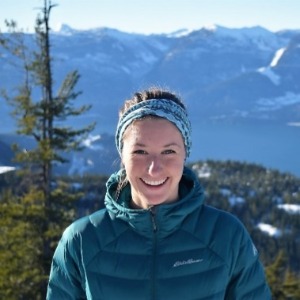Apr 08, 2020
Small Drone Photos - Open Vegetation Protocol
- 1Université de Sherbrooke;
- 2Université de Montréal
- Canadian Airborne Biodiversity ObservatoryTech. support email: jocelyne.ayotte@umontreal.ca

External link: http://caboscience.org/
Protocol Citation: Sabine St-Jean, Etienne Laliberté 2020. Small Drone Photos - Open Vegetation Protocol. protocols.io https://dx.doi.org/10.17504/protocols.io.9zch72w
License: This is an open access protocol distributed under the terms of the Creative Commons Attribution License, which permits unrestricted use, distribution, and reproduction in any medium, provided the original author and source are credited
Protocol status: In development
We are still developing and optimizing this protocol
Created: December 02, 2019
Last Modified: April 08, 2020
Protocol Integer ID: 30468
Keywords: DJI drone, vegetation inventories, open vegetation
Abstract
Here we describe the standardised protocol used by the Canadian Airborne Biodiversity Observatory (CABO) to take small drone pictures of the plots and subplots in open vegetation surveys. In 2019, such pictures were taken at the Mer Bleue Bog (Ontario) and Parc national des Îles-de-Boucherville (Québec) sites. These pictures are to be classified later (see the Post Processing protocol) to obtain the abundance and distribution of plant species through every subplot.
Materials
Equipment
new equipment
NAME
CAT S41 Field cellphone
BRAND
-
SKU
LINK
Equipment
Go 4
NAME
App
TYPE
DJI
BRAND
-
SKU
The application used to connect your cellphone to the drone controller. Your cellphone then becomes the screen interface to control the drone.
SPECIFICATIONS
Equipment
Wood pannel for take-off and landing
NAME
-
TYPE
-
BRAND
-
SKU
Safety warnings
Carry with you your Transport Canada permit as well as the required insurance documentation.
Before start
Ensure all batteries are charged.
Picture-Taking
Picture-Taking
Fly the small drone to take photos of the plots and subplots.
Equipment
new equipment
NAME
CAT S41 fieldwork cellphone
BRAND
-
SKU
LINK
Equipment
Go 4
NAME
App
TYPE
DJI
BRAND
-
SKU
The application used to connect your cellphone to the drone controller. Your cellphone then becomes the screen interface to control the drone.
SPECIFICATIONS
Equipment
Wood pannel for take-off and landing
NAME
-
TYPE
-
BRAND
-
SKU
Turn on the drone and the controller. Connect the controller to your phone and open the DJI Go 4 App. Press Go Fly. Adjust the settings to Speed = 1:1000 and Iso = 400. If it is very sunny, set the Iso to a lower value; if darker, to a higher value. Activate the Grid option to view lines of the center of the image.
Take off.
Note
Before taking each picture, make sure:
- the camera is at a 90° angle (facing down completely),
- the plot or subplot is centered and its sides are visible,
- and the drone is still.
Take a photo of the whole plot, with the southwest corner of the grid being in the lower-left corner of the picture.
Fly at a sufficient height to see the whole plot.
Take the photos of each subplot, in the same order as the subplots numbers.
Fly at a sufficient height to see the whole subplot. The ideal height of the drone should be set so that the sides of the subplot can be seen in the image, and otherwise as close to the vegetation as possible without wind created by the drone causing movement of the vegetation (which blurs the image).
Land the drone on the platform.
From the DJI Go 4 App → Editor → Album → Photo, download all of the original pictures to your cellphone. Turn off the drone and the controller and put them back in their case until the next flight.
Photo Import
Photo Import
Import the photos.
Equipment
new equipment
NAME
CAT S41 fieldwork cellphone
BRAND
-
SKU
LINK
From your cellphone Photo App → DJI album, move the 10 pictures from the plot (1 for the plot and 9 for the subplots) to a new album titled with the plot name.
Crop each picture to limit the area outside the plot or subplots' perimeter. The edges of the PVC pipes forming the plot or subplot of interest should remain visible.
Note
Once the photos of a given plot have been put in a specific album (step 2.1), steps 2.2 to 2.4 can be done later (i.e., outside the field) to maximize efficiency on the field.
Upload the picture of the plot to Fulcrum, under Vegetation Surveys: Herbs and Shrubs → Survey Event → Vegetation Photos: Plot.
Upload the picture of the subplots to Vegetation Surveys: Herbs and Shrubs → Cover Estimates: Subplot → Subplots → Record item [1 to 9] → Vegetation Photos: Subplot.
